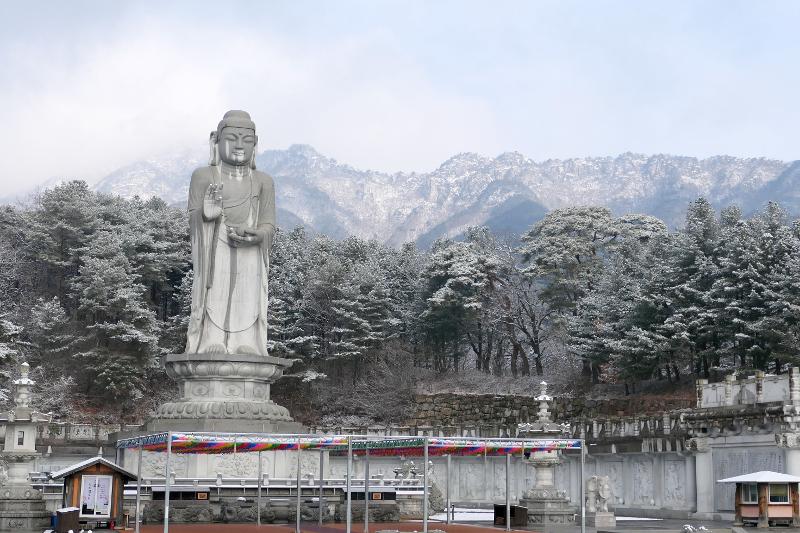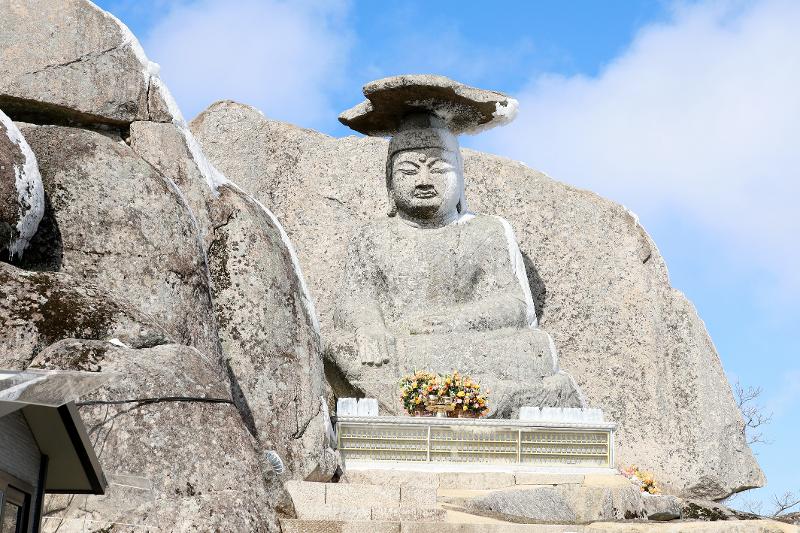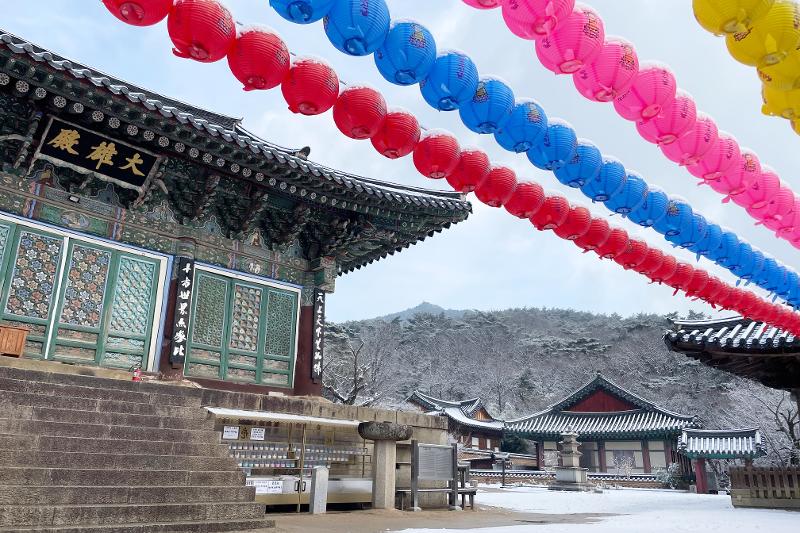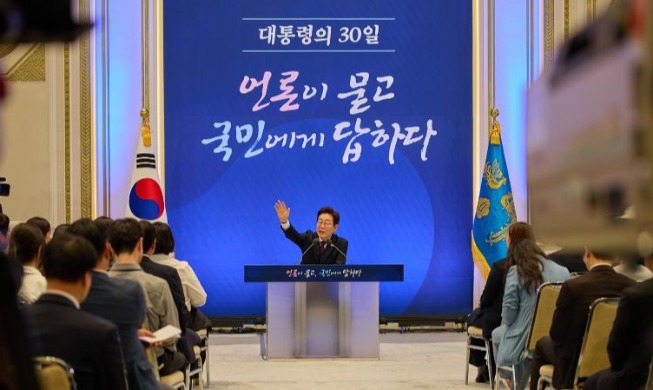
This is the foothills of Palgongsan Mountain as seen from behind the statue Tongil (Unification) Bhaisajyaguru Sutra at Donghwasa Temple in Daegu.
By Margareth Theresia
Photos = Palgongsan National Park Eastern Office
March 3 in Korea is National Park Day, which promotes the value and importance of such parks to the public and sheds light on their significance. Among the 23 parks designated by the government, Palgongsan National Park is the newest.
Spanning Daegu and Gyeongsangbuk-do Province, this park covers a combined 126,058 square km. Its numerous peaks including the main one Birobong (1,193 m above sea level) combine to form a harmony and a magnificent scene at the park.
This park not only boasts beautiful natural scenery but also an outstanding natural ecosystem and abundant cultural resources, attracting hordes of visitors year round. Legend has it that one's wish will come true by praying with all one's heart in front of the cross-legged Gwanbong Seated Stone Buddha at the summit, thus many Buddhists and visitors go there.
"Palgongsan National Park has about 100 cultural artifacts," said Jeong Jeong-kwon, superintendent of Palgongsan National Park Eastern Office. "Housing the leading domestic temples Donghwasa and Eunhaesa, the park is in the heart of Daegu and can be easily visited by riding city buses."
A Korea.net staff writer on Feb. 27 visited this easily accessible park. Daegu is sometimes jokingly called "Daefrica," a portmanteau of the terms "Daegu" and "Africa" due to its hot summer, but it snowed the day before and thus allowed the writer to experience the winter scenery and silent meditation there.

This statue of Buddha is said to grant the wish of a visitor who sincerely prays to it.
Gatbawi Buddha, a stone statue of a sitting Buddha on Gwanbong Peak (853 m above sea level) in the park's southern region, was carved during the era of Unified Silla (676-935). A Buddha statue typically has nothing on its head, but this one wears a gat (traditional male hat) and thus received its name, with the bawi part of its name meaning "rock."
Hong So-ra, a junior assistant at the park's Eastern Office, said, "A gat also looks like a graduation cap, so this place is packed with parents praying for their children to do well around the time of the college admissions exam."
Two paths lead to Gatbawi Buddha. The first goes up to Seonbonsa Temple in Gyeongsan, Gyeongsangbuk-do Province, on a path steep but well cleared of snow and thus safe to walk in winter.
The second can be entered from Daegu. This trail has 1,365 stairs made by Gwanamsa Temple to symbolize 365 days of the year.

Donghwasa Temple, one of the country's leading Buddhist temples, is a chongnim, or a training center for Buddhist meditation and practices, with a history and tradition of 1,500 years. As a large venue where many monks gather to meditate, the chongnim has the meditation training hall seonwon; classroom for sutras gangwon; specialized academy for teaching precepts yulwon; and chanting center yeombulwon.
Donghwasa Temple was rebuilt several times since its establishment in 493. Visitors can see both old and new buildings akin to the past and present holding dialogue.
Within this temple is Daeungjeon Hall, which was also rebuilt several times. The latest refurbishment is believed to have made between 1727 and 1732. Located in the heart of the temple where monks live to practice Buddhism, the hall houses the three Buddhas: Sakyamuni Buddha, Amitabha Buddha and Medicine Buddha.
Donghwasa's main Buddha statue is the Tongil (Unification) Medicine Buddha, which was completed in 1992 with the wish of reunification of the Korean Peninsula, world peace and happiness of humanity. At 33 m tall, the structure is the world's largest stone Buddha statue.
"The foothills of Palgongsan Mountain behind this statue are covered in snow to show a world filled with lotus flowers," said Eun Mi-hyun, another junior assistant at the park's Eastern Office. "If you pray at a temple across from it, you can see a good view of the Medicine Buddha."
How to visit Palgongsan National Park without needing to climb it:
A panoramic view of Palgongsan Mountain in Daegu and the cityscape awaits the traveler who goes to the cable car observatory. One can also make a wish at a nearby sowonbawi (wish rock).
Visitors can reach the observatory on Sillimbong Peak (820 m) in 10 minutes by riding a cable car. Going up the rocky hill behind the observatory offers views of both nature and the city at a glance like Topnal Neungsan (Knife Edge Ridge) on Gwanbong Peak (where rocks are), which leads to Pagyejae Hills, and the peaks of Dongbong and Birobong.
Palgong Bus No. 3, which runs only on weekends, offers easy access to the leading attractions of Palgongsan National Park such as Gasansanseong Fortress, Pagyesa Temple, Sutaegol Valley, Donghwasa Temple and Gatbawi.
margareth@korea.kr
